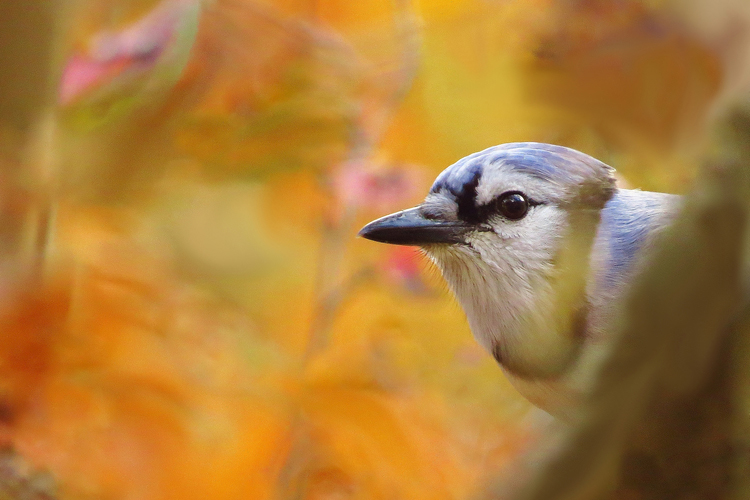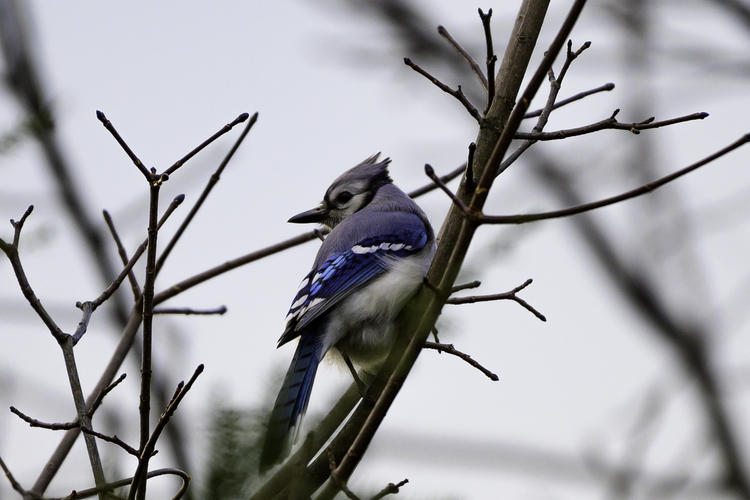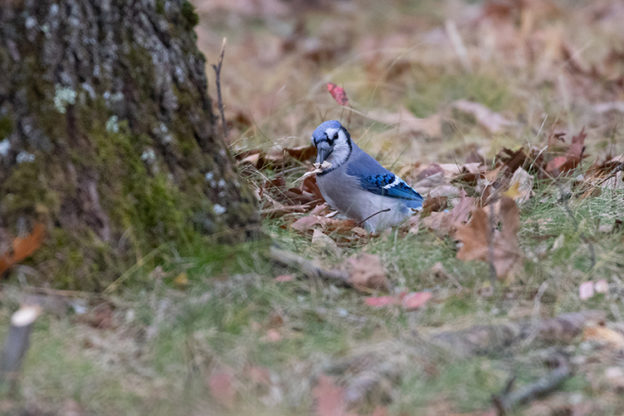On the trunk of an Oak Tree, a squirrel scales the bark in pursuit of a treasured acorn, while a chipmunk nearby already has its cheeks stuffed. Squirrels and chipmunks are the usual suspects for acorn collection, but they have a formidable opponent: the Blue Jay.

Acorn Frenzy
Similar to squirrels, Blue Jays cache their acorns and collect a whopping 3,000 to 5,000 acorns in one autumn. And not just any acorns. These skilled jays can determine if the acorn is infested with pesky weevils—a process that still puzzles scientists—by simply picking one up in their beaks.

Blue Jays can hold up to three acorns in the gular pouch located in their throat, along with one in their mouth and one in the tip of their beak, for a total of five acorns per trip. They store the acorns in the ground, and the ones that don’t get eaten by the jay, or any other creature looking for a snack, are left to germinate and grow. Because of this, Blue Jays are often credited with spreading oak tree populations after the last glacial period.
Dazzling and Intelligent
Clever, pugnacious Blue Jays are well-known for their territorial behavior and raucous Jay! Jay! call, but they are capable of an amazing array of vocal sounds, including whistles, toots, and wheedle-wheedle calls. Blue Jays can even mimic the scream of a Red-tailed Hawk in order to scare other birds.

Like all blue birds, Blue Jays are not actually blue! Most of the vibrant feather colors found in birds, like yellow and red, come from pigments in their food that absorb certain wavelengths of light, but no birds (and almost no species in the entire animal kingdom) can produce blue pigments. Instead, the blue color is the result of light refracting off tiny, specialized structures in the bird’s feathers.
For more information, visit our Quick Guide and our page on Blue Jays.



Interesting – I leave in-shell peanuts out for Jays. I also see the pick up and put down behavior. I wonder if that is your ‘acorn behavior’ being carried over to other in-shell nuts